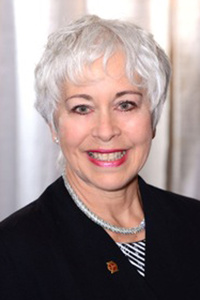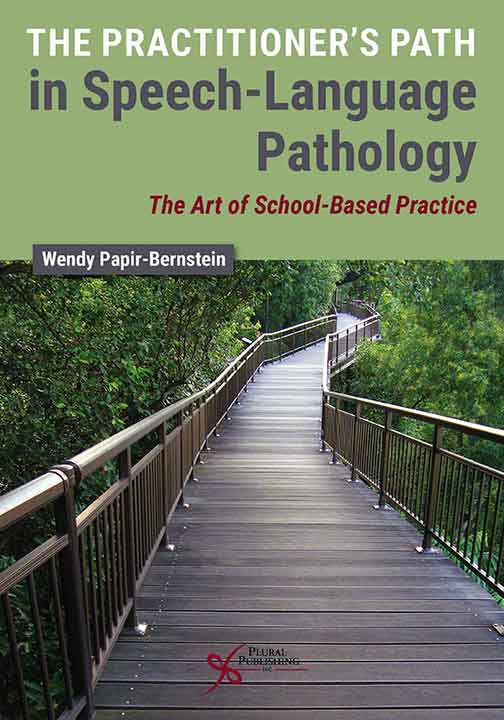
The Practitioner's Path in Speech-Language Pathology: The Art of School-Based Practice
First Edition
Wendy Papir-Bernstein
Details: 402 pages, B&W, Softcover, 7" x 10"
ISBN13: 978-1-94488-345-4
© 2018 | Available
For Instructors
Purchase
The Practitioner's Path in Speech-Language Pathology: The Art of School-Based Practice bridges the gap between theory and practice, evidence-based practice and practice-based evidence, and the science and artistry of speech-language pathology. This book takes a critical look at areas related to wellness, professional development, and growth that can impact the personal self along with the professional self. It examines each area through an overview of inter-disciplinary research in addition to personal narratives illustrating key principles and strategies and offers the reader a professionally balanced perspective.
The first section of the book helps us understand the importance of building a foundation for our clinical path through a discussion about scientific and evidence-based principles, different types of knowledge systems, and development of wisdom. The second section of the book helps us understand the importance of supporting our foundation through an introduction to reflection, counsel and care, balance and harmony, growth and detachment. The third section of the book includes chapters that serve as pillars of practice: organizational frameworks, materials and activities, measuring progress, best practices, and the importance of community. The fourth and final section of the book highlights shared vision, clinical expertise, emotional intelligence, leadership trends, the scholarship of teaching and learning, and research dissemination.
This book challenges us to consider our own perceptions about the explicit nature of professional practice, and facilitates the development of four attitudes that can have a profound impact on both clinical success and professional satisfaction: a scientific attitude, a therapeutic attitude, a professional attitude, and a leadership attitude. It contains a blend of clinical evidence and research, practitioner views, common sense, philosophical stances, and historical overviews. The Practitioner's Path in Speech-Language Pathology is designed for students and practitioners who are actively involved with the process of knowledge acquisition, and targets issues we encounter along our path to becoming reflective practitioners, as they relate to the excellence behind and scholarship within teaching and learning.
Reviews
"I am pleased to recommend this essential new book on practice-based evidence. This is a book that merits a place in the professional library of all speech-language pathologists, regardless of work setting. It opens our eyes to aspects of our professional world that we may have never considered."
—Robert Goldfarb, Ph.D., Fellow, ASHA Professor, Department of Communication Sciences and Disorders, Adelphi University
"It truly is a handbook for anyone in the field—from students through seasoned professionals to those who have become leaders as a result of traveling the path. The focus is stated for the need for a transformation of the field from disorder and task-centered to person-centered through an interprofessional journey, as well as a self-journey for each professional. The organization follows a natural progression with sections for: building, supporting/, following and becoming our path. Within each section, background information with huge amounts of references and resources support the development of the stated focus. Especially helpful are the many frameworks and theories. Based on the focus of the book and the interdisciplinary nature of speech-language pathology, well-integrated material is key. This book certainly illustrates how integration of various fields and philosophies is key to improving therapeutic outcomes in each chapter and in the framework of the book. References and especially the appendices are helpful for exploring further knowledge and for self-reflection. Truly a handbook! Contents go beyond anything I've read in the last 30 years in terms of depth, clarification of the interdisciplinary nature of the field and vision for the practice. Inclusion of "Autobiographical Reflective Tales" brought theories to life and helped with application of information. I have been highly recommending it to those speech-language pathologists with whom I have contact, which are school-based supervisors, staff developers and providers working with students from pre-school through age 21. It can be picked up and specific sections used as a reference for targeted areas of focus, as well as read in its entirety to gain perspective on developing an understanding about speech-language as a life path and where one is along the path. Well-done!"
—Jacqueline Toscano
"Wendy Papir-Bernstein's book, The Practioner's Path in Speech-Language Pathology: The Art of School-Based Practice, is an essential read for anyone searching for a connection between their chosen profession and their spirituality. The book is written with thought-provoking purpose, and challenges us to explore all facets of our professional framework, one element at a time. An ideal book for both students and professionals, it implores us to recognize the need to remain flexible, tolerant, and open to changes that are imperative to our personal and professional growth. Ms. Papir-Bernstein artfully combines data and evidence-based research with philosophical, historical, and spiritual viewpoints throughout the book. She tells of her own experiences as a clinician, professor, and supervisor, with humor, raw honesty, and self-reflection through compelling narratives. The book has inspired me to reconsider my own path, professional and spiritual, and I only wish a book like this had been around when I first began my career as a school-based clinician."
—Jasleen Kaur Giannitelli, M.A., CCC-SLP
"In her book, Wendy Papir-Bernstein reminds us that we are so much more than the techniques we apply to support our clients. In fact, the same things we hope for the people with whom we work (e.g., change, reflection, autonomy, balance, growth, wellness etc.) are the very things we should seek for ourselves as professionals. For those of us who provide clinical instruction, Ms. Papir-Bernstein also makes explicit what we hope to instill in our students, concepts that go beyond the activity of the mind and tap into the heart and soul. Ms. Papir-Bernstein's ideas draw on a variety of disciplinary perspectives, many of which have been around far longer than the profession of speech-language pathology."
—Jack Pickering, Ph.D., CCC-SLP Professor of Communication Sciences and Disorders College of Saint Rose, Albany, NY
Preface
Acknowledgments
Reviewers
Introduction
Part I. Building Our Path: From Data to Wisdom
Chapter 1. Development and Design of Information
1. The Place of Science
2. Evidence-Based Practice
3. Practice-Based Evidence (PBE)
4. Translational Research (TR)
Reflective Summative Questions
References
Chapter 2. Acquisition and Advancement of Knowledge
1. Knowledge Systems
2. Knowledge Management and Information Design
3. Tacit Knowledge vs. Explicit Knowledge
4. Knowledge Translation and Research Utilization
5. The Significance of Narratives and Experiential Stories
Reflective Summative Questions
References
Chapter 3. Obtainment and Orientation of Wisdom
1. What Is Wisdom?
2. Spirituality
3. The Heart and Soul of Our Work
4. The Value of Intuition
5. Learning to Flourish and Enhance Professional Happiness
6. Guiding Principles, Recurring Themes, and Enduring Truths and Their Relationship to Our Attitudes, Philosophy, and Ethics
Reflective Summative Questions
References
Part II. Supporting Our Path: Philosophical Pillars of Practice
Chapter 4. Reflection
1. Attention and Self-Awareness
2. Belief
3. Reflective Knowledge Systems
4. Reflective Practices
Reflective Summative Questions
References
Chapter 5. Counsel and Care
1. Active Listening
2. Mindfulness
3. Counseling
Reflective Summative Questions
References
Chapter 6. Balance and Harmony
1. Perspectives, Frames, and Lenses
2. Personal and Professional Lives
3. Science and Practice
4. Clinical Interactions
5. Emotional Balance
Reflective Summative Questions
References
Chapter 7. Growth
1. Self-Efficacy
2. Understanding Change
3. Critical Thinking and Clinical Reasoning
4. Developing a Clinical Philosophy
Reflective Summative Questions
References
Chapter 8. Detachment
1. What Do We Mean By Detachment?
2. The Ultimate Purpose of Our Work
3. Prompts, Cues, and Chains
4. Carryover and Generalization
5. Increasing Independence
6. Therapeutic Change
7. Termination From Service
Reflective Summative Questions
References
Part III. Following Our Path: Guideposts and Stepping Stones
Chapter 9. Studying Different Maps
1. Philosophical Theories and Frameworks
2. The Paradigm Debate: Mechanistic vs. Holistic
3. Systems Thinking
4. Types of Learning
5. Learning Theories
6. Principles of Instructional Design
Reflective Summative Questions
References
Chapter 10. Implementing Materials and Activities
1. Materials vs. Activities
2. Play
3. Material Selection
4. Material Cautions
5. Visual Learning Materials
6. Gamification
7. Digital Media
Reflective Summative Questions
References
Chapter 11. Measuring Progress
1. The Process of Assessment
2. The Power of Observation
3. Data Collection
4. Qualitative Strategies of Inquiry
5. Measuring Outcomes
Reflective Summative Questions
References
Chapter 12. Incorporating Good and Best Practices
1. From Good to Best (and Back Again)
2. Naturalistic
3. Reciprocal
4. Curriculum-Related
5. Universal
6. Inclusive
Reflective Summative Questions
References
Chapter 13. Working in Community
1. Person-Centered Care (PCC)
2. The Therapeutic Alliance
3. Collaborations and Teamwork
4. Boundaries
Reflective Summative Questions
References
Part IV. Becoming Our Path: Leadership Practices
Chapter 14. The Ownership Process
1. Self-Care
2. Self-Advocacy
3. Professional Impairment and Stress
4. Work Environments and Stress
5. Reflective Practices
Reflective Summative Questions
References
Chapter 15. Creation of a Learning Organization
1. The Learning Environment
2. Program Effectiveness
3. Compliance, Adherence, and Concordance
4. Clinical Expertise
5. Communities of Practice
6. Self-Directed Appraisal Process
Reflective Summative Questions
References
Chapter 16. Leadership Within Teaching and Learning
1. Professional Development Content
2. The Hidden Curriculum
3. Sharing the Implicit and Tacit
4. Engaged Scholarship
5. Forging Translational Pathways
6. Signature Pedagogy
7. Using Reflective Practice for Teaching and Learning
Reflective Summative Questions
References
Chapter 17. Practice-Based Leadership
1. Transformational Leadership
2. Qualities of Effective Leaders
3. Emotional Intelligence
4. Learning Leaders
5. The Challenges of Leadership
6. Leadership Development
Reflective Summative Questions
References
Conclusion
Appendix A. Activity Based Language Experiences (ABLE)
Appendix B. Multicultural Activities
Appendix C. Diversity Perspective: Self-Assessment
Appendix D. Program Effectiveness
Appendix E. Technical and Process Intervention Skills
Appendix F. Professional Growth Plan
Appendix G. Assessing Diversity Aspects of the Hidden Curriculum
Appendix H. Observation of Student Behavior as it Reflects Emotional Intelligence
Appendix I. The Emotional Competency Questionnaire
Index
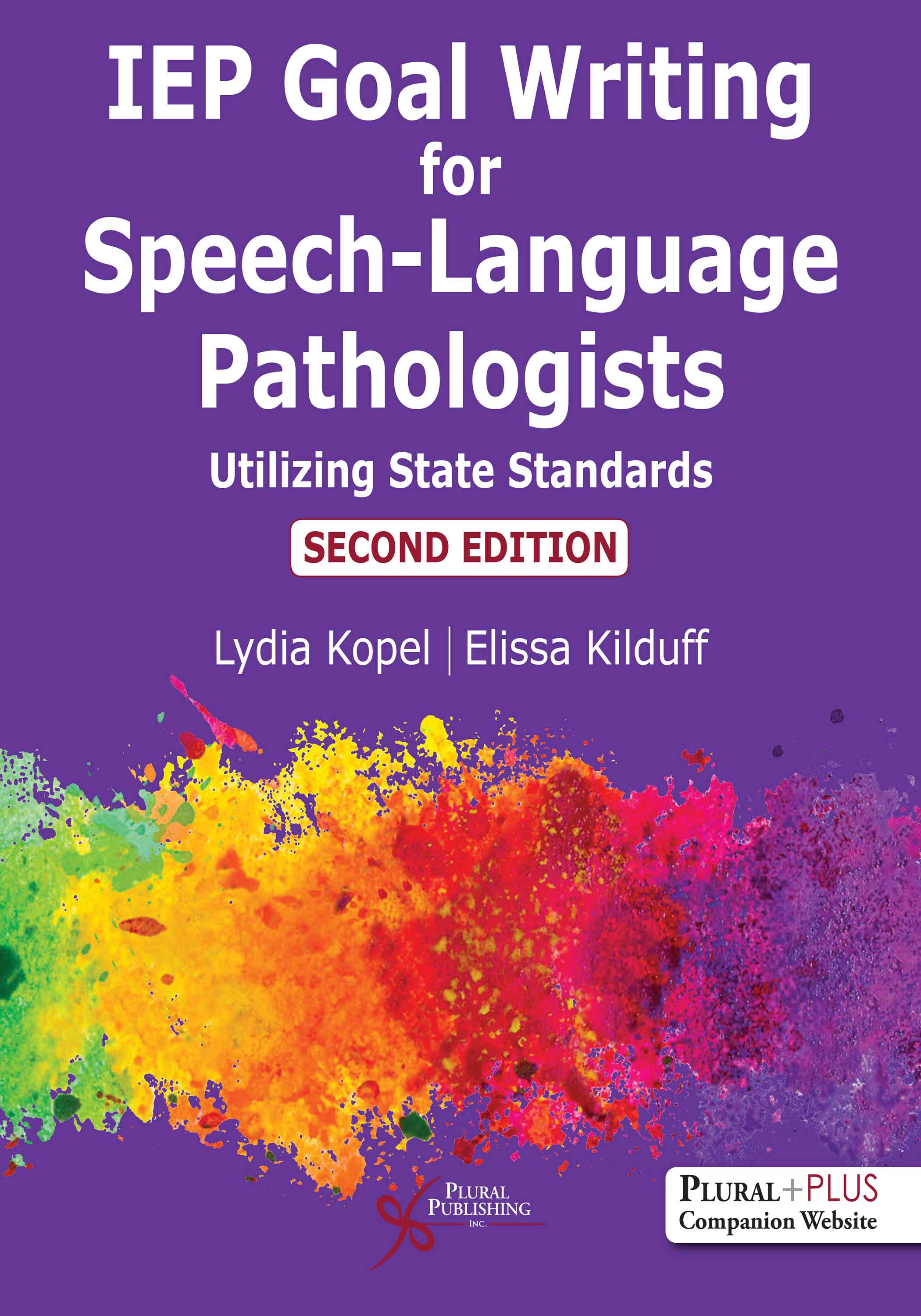
IEP Goal Writing for Speech-Language Pathologists: Utilizing State Standards
Second Edition
Lydia Kopel, Elissa Kilduff
Details: 243 pages, B&W, Softcover with layflat binding, 8.5" x 11"
ISBN13: 978-1-63550-202-2
© 2021 | Available

Language and Literacy Connections: Intervention for School-Age Children and Adolescents.
First Edition
Geraldine P. Wallach, Alaine Ocampo
Details: 358 pages, B&W, Softcover, 7" x 10"
ISBN13: 978-1-63550-213-8
© 2022 | Available
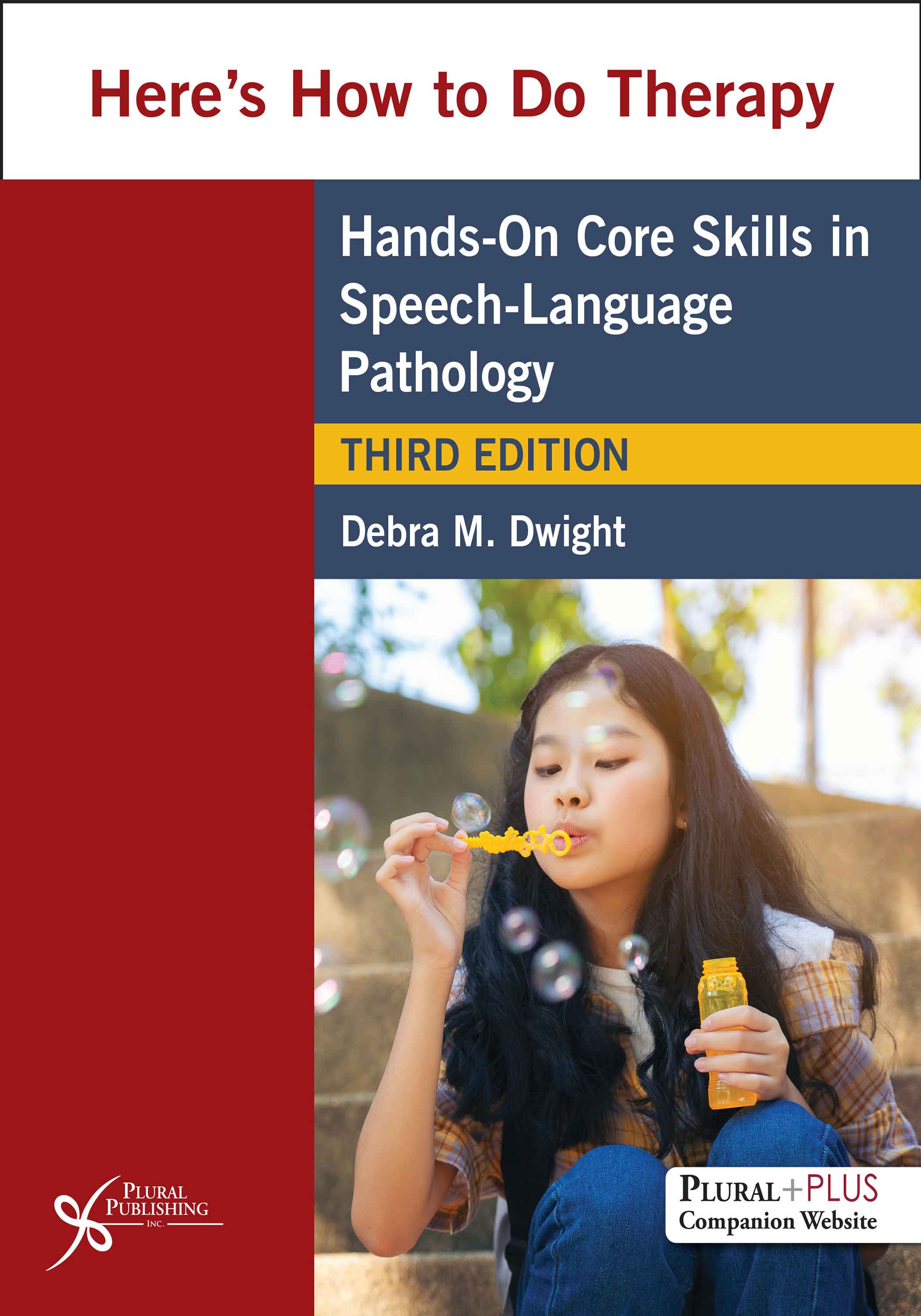
Here's How to Do Therapy: Hands on Core Skills in Speech-Language Pathology
Third Edition
Debra M. Dwight
Details: 460 pages, B&W, Softcover, 8.5" x 11"
ISBN13: 978-1-63550-320-3
© 2022 | Available
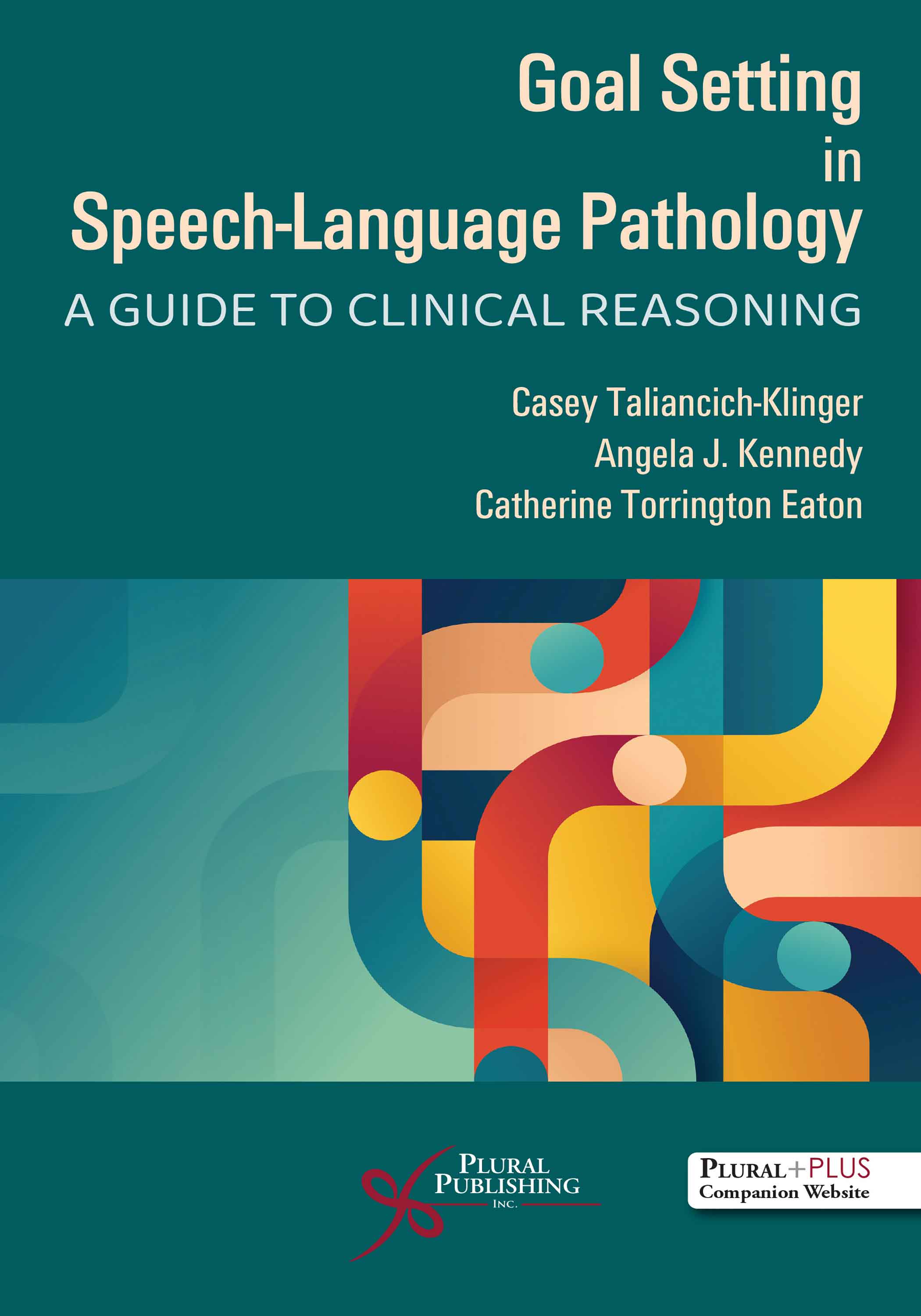
Goal Setting in Speech-Language Pathology: A Guide to Clinical Reasoning
First Edition
Casey Taliancich-Klinger, Angela J. Kennedy, Catherine Torrington Eaton
Details: 114 pages, B&W, Softcover, 6" x 9"
ISBN13: 978-1-63550-432-3
© 2025 | Available
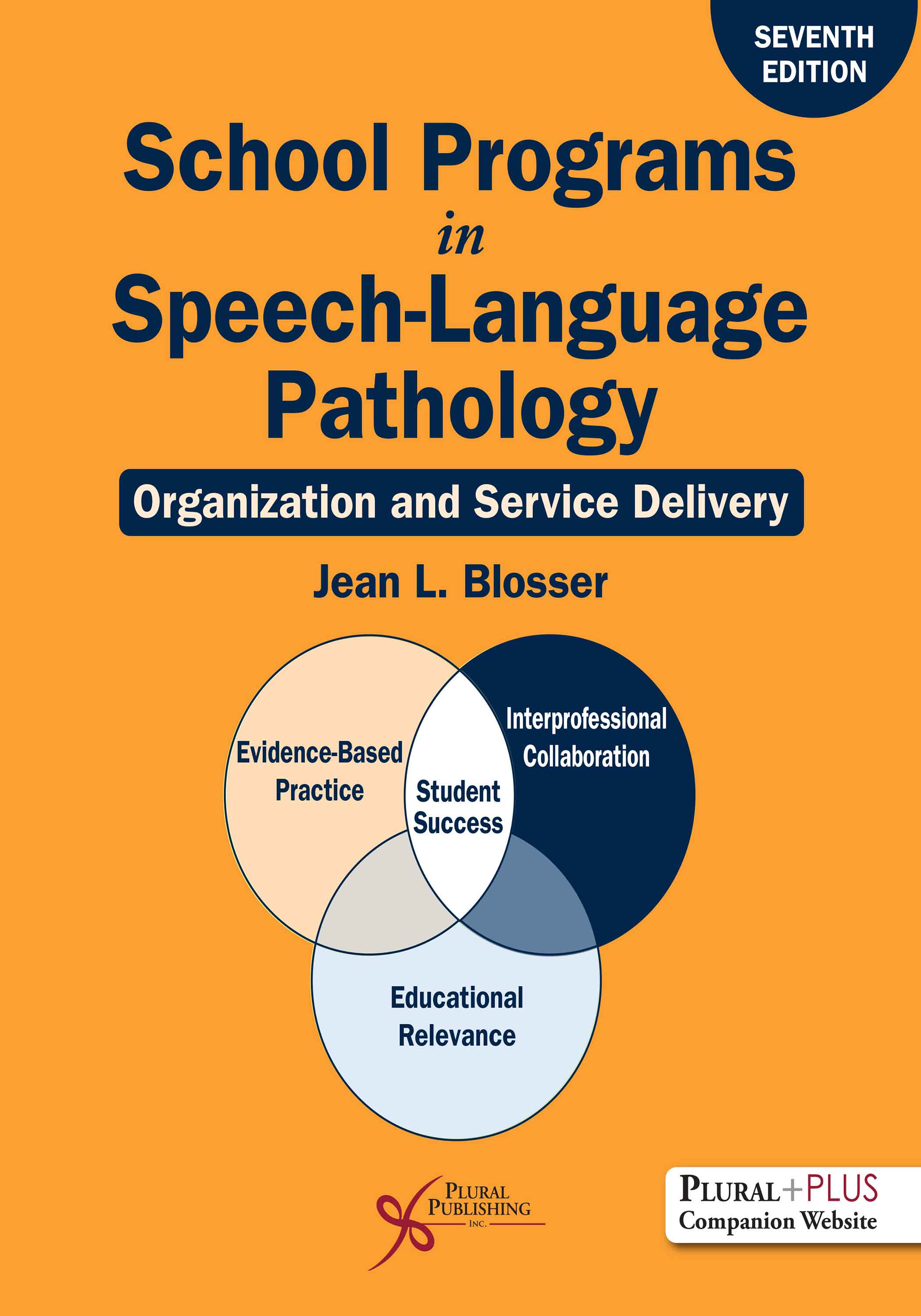
School Programs in Speech-Language Pathology: Organization and Service Delivery
Seventh Edition
Jean Blosser
Details: 457 pages, B&W, Softcover, 8.5 " x 11"
ISBN13: 978-1-63550-611-2
© 2025 | Available
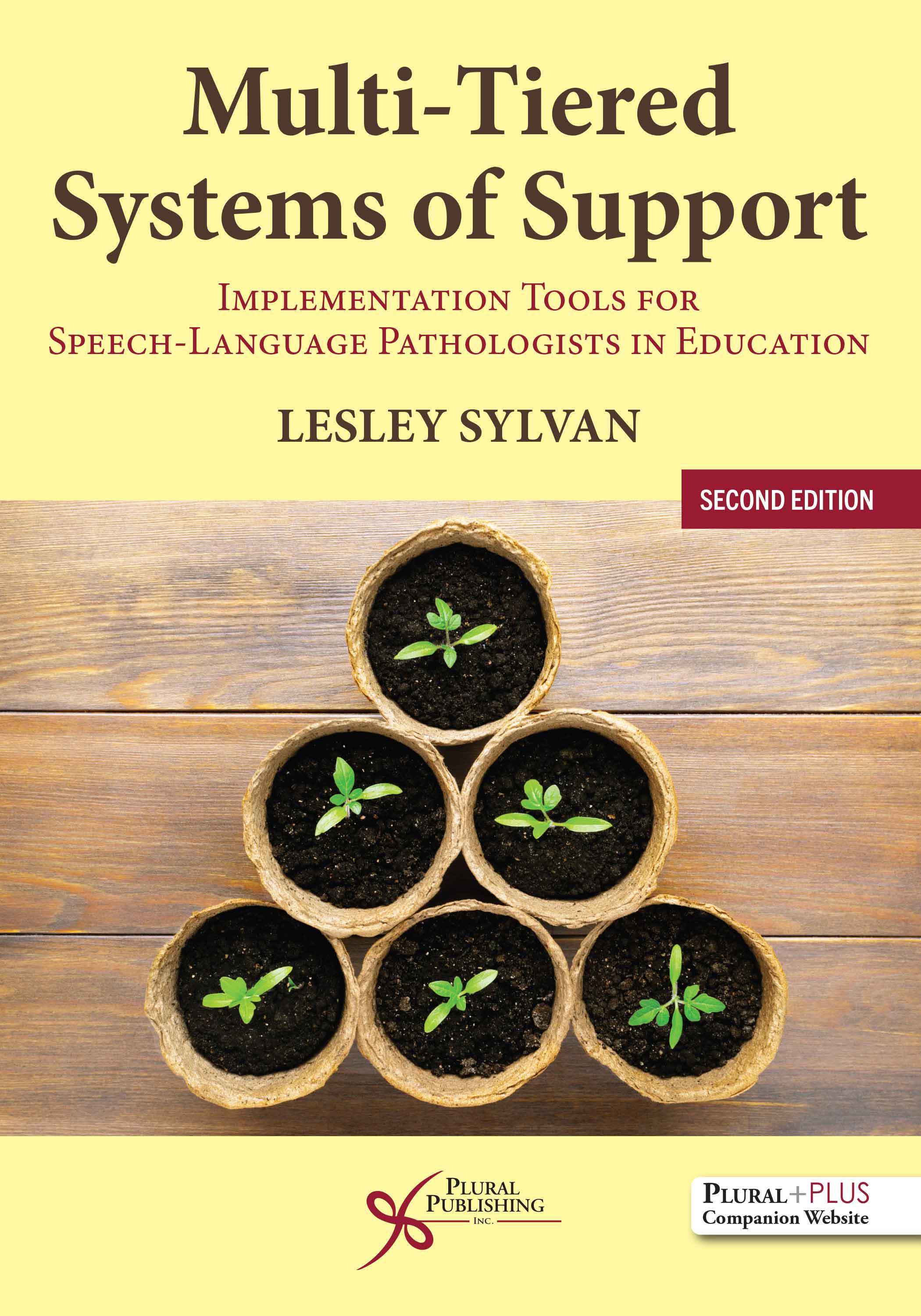
Multi-Tiered Systems of Support: Implementation Tools for Speech-Language Pathologists in Education, Second Edition
Second Edition
Lesley Sylvan
Details: 315 pages, B&W, Softcover, 7" x 10"
ISBN13: 978-1-63550-780-5
© 2026 | Coming Soon
Release Date: 06/01/2026

